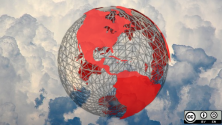Green Energy Corp creates software and services for communications and energy companies. They're working towards an open source smart grid solution that will help both new and old companies in the industry for more efficient, greener energy.
Tell us about you and the company--how did Green Energy Corp start, and what's the mission?
My name is Adam Crain, and I'm currently serving as the Chief Platform Architect for Green Energy Corp. We are a software company focused on building scalable automation solutions for the Smart Grid. We're focused on using open source as a building block for our products and contributing back to the community. My personal background is in software engineering for various kinds of automation. I have always tried to incorporate high-quality open source into projects/products as a way of savings customers money and improving value. At Green Energy Corp, I play a big part in our technology selection and open source strategy. My personal mission is to bring the open source concept to an industry that is somewhat behind other industries like finance and telecom both in terms of IT modernization and open source adoption.
How does open source fit into the smart energy grid picture?
Lots of work is currently being done by the government and key industry players to standardize protocols and enterprise models, however, little focus is being placed on open source from these organizations. Reference implementations and high-quality open source help drive the adoption of open standards. They lower the barrier to entry by providing smaller companies with the common 'plumbing' and ultimately, via collaboration, increases the quality of this common base of code. Low barrier to entry drives innovation by allowing new players to enter the space without huge up front investments. One couldn't imagine every organization having to implement TCP + HTTP to be a player in online sales? Why shouldn't the same be true of the Smart Grid?
Tell us about collaboration between companies and research
in TotalGrid.
Green Energy Corp sponsors an open source community called TotalGrid. It is a hub for all of our open source projects. We made our first release last summer with DNP3 (a protocol used pervasively by field devices within the energy space). This is an example of one type of common 'plumbing' required to enter utility market. We received a lot of interest and participation in the short period of time the software has been available. I am aware of the software being using in at least 5 different commercial settings and several academic research environments.
Green Energy Corp is engaged directly with the National Science
Foundation sponsored FREEDM Center at North Carolina State Univirsity (NCSU). Graduate students at FREEDM are directly engaged in the open source TotalGrid community. The FREEDM center acts as a test bed for our cutting edge open source efforts that we have not yet productized. In essence, it is a great way to beta-test
our software, in a technically rigorous environment.
Why are open standards important in the energy field?
Open standards, open source, and an attitude of healthy competition are all going to be key to innovation in the energy field. Open standards are a precursor to open source. The utility industry has already bought into this concept, and the narrowing, refinement, and harmonization of open standards is rapidly progressing. The problem is there isn't a lot of sharing actually going on. A change in mindset and new business models are often disruptive, but can frequently bring about marked change.







Comments are closed.